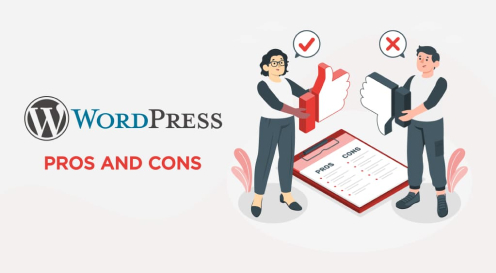The Ultimate Guide to Landing Page Optimization for Higher Sales
14 Mar 2024 | 5 min readUnderstanding the Importance of Landing Pages
Understanding the role of landing pages is critical in digital marketing and advertising. Landing pages are the specific web pages that potential customers are directed to after clicking on an ad or a marketing link. Their importance cannot be understated for several reasons:
- First Impressions Matter: Landing pages are often the first substantial interaction a potential customer has with your business. They set the tone for the user experience and can significantly influence the visitor’s perception of your brand.
- Targeted Messaging: Unlike general website pages, landing pages are tailored to specific marketing campaigns. They focus on a single message or offer, aligning closely with the ad content that brought the visitor there, which helps maintain the user’s interest and increase engagement.
- Increased Conversion Rates: Well-designed landing pages are streamlined for conversions, whether that’s making a sale, gathering contact information, or leading a customer to another action. They remove distractions and guide the user towards taking a specific action, thereby increasing the likelihood of converting visitors into customers.
- Valuable Metrics and Insights: Landing pages provide valuable data on user behavior, engagement, and conversion rates. This information is crucial for understanding your marketing campaigns’ effectiveness and making data-driven decisions to optimize future strategies.
- Testing and Optimization: Landing pages allow for A/B testing where different elements like headlines, copy, images, and call-to-action buttons can be tested to see what works best. This continuous optimization can lead to better performance and higher conversions.
The Impact of Optimizing Landing Pages on Conversion Enhancement
Optimizing landing pages is a critical strategy in digital marketing for boosting conversion rates. Effective landing page optimization involves several key aspects:
- Clear and Relevant Content: The content on a landing page should be directly related to the visitor’s expectations set by the ad or link they clicked. Clear, relevant content ensures the visitor remains engaged and is more likely to take the desired action.
- Streamlined Design: A well-optimized landing page should have an easy-to-navigate design, emphasizing simplicity and clarity. This helps in guiding visitors smoothly towards the conversion goal without distractions.
- Effective Calls-to-Action: The call-to-action (CTA) on a landing page must be prominent and compelling, encouraging visitors to complete the conversion action, whether it’s making a purchase, signing up, or another goal.
- Quick Load Times: Speed is crucial for landing pages. Faster loading times reduce the likelihood of visitors leaving the page prematurely, thereby increasing the chances of conversion.
- Mobile Optimization: With more people browsing on mobile devices, a mobile-optimized landing page is essential to cater to this growing audience and ensure a seamless experience across all devices.
- Continuous Testing and Improvement: Regularly testing different elements of the landing page, such as headlines, images, and layout, allows for ongoing refinement and improvement of the conversion rate.
Key Elements for a Landing Page That Converts
A high-converting landing page is crafted by integrating several crucial elements that capture and maintain the attention of visitors, effectively boosting conversion rates:
- Eye-Catching Headline: The headline is the visitor’s first impression. Make it striking and ensure it succinctly conveys the core benefit of your offering.
- Visually Appealing Graphics: Utilize quality images or videos that align with your message to draw in and engage visitors.
- Streamlined Forms: If your landing page includes a form, aim for simplicity. Limit the number of fields to only the essentials to minimize visitor effort and maximize form completions.
- Elements of Trust: Boost credibility by incorporating customer testimonials, endorsements, or relevant statistics that underscore the reliability of your product or service.
Strategies for Effective Landing Page Optimization
Enhancing your landing pages for better performance involves several strategic approaches:
- Implementing A/B Testing: This technique compares two versions of your landing page (Version A and Version B) with slight variations in elements like the headline, images, or call-to-action buttons. By analyzing which version yields better conversion rates, you can determine the most effective elements for your audience. Regular A/B testing helps in fine-tuning your landing pages for optimal performance.
- Speeding Up Page Load Time: Your landing page’s swiftness is critical for retaining visitor interest. Slow-loading pages risk higher abandonment rates. To improve speed, optimize image sizes, streamline code, and use efficient hosting solutions. Tools like Google’s PageSpeed Insights offer actionable suggestions for making your page faster.
- Streamlining the Conversion Journey: The easier visitors can convert, the higher your chances of success. This could involve reducing the number of fields in a form, clarifying the value proposition, or making the call-to-action more prominent and enticing. The goal is to remove any obstacles preventing a smooth conversion process.
Design Best Practices for Optimizing Landing Pages
To ensure your landing pages are effective and engaging, here are some design best practices to consider:
Crafting a Simplified, User-Centric Layout:
Focus on creating a layout that is straightforward to navigate. The design should direct visitors to your main call-to-action (CTA) without unnecessary distractions. Effective use of whitespace can help highlight key elements and make the page less overwhelming.
Leveraging Visual Elements for Better Engagement:
Integrate visual aids like images, short videos, or illustrations to engage the user. These should be relevant and add value to the content, helping to illustrate points and maintain user interest without cluttering the page.
Adopting Responsive Design for Accessibility:
In today’s mobile-first world, ensuring your landing page looks great and functions flawlessly across various devices, including smartphones and tablets, is crucial. Responsive design ensures that your page adjusts seamlessly to different screen sizes, offering a consistent user experience.
Analyzing and Measuring Landing Page Performance
To optimize your landing pages effectively, measuring their performance thoroughly is essential. Here are some key methods to do so:
Examining Conversion Rates
The most direct indicator of a landing page’s success is its conversion rate. This metric reflects the percentage of visitors completing a desired action, like purchasing or signing up. Regular assessment of this rate can show the landing page’s effectiveness in achieving your objectives.
Leveraging Heatmap Tools
Heatmaps are visual tools that show where users click, move, and scroll on your landing page. They provide valuable insights into user behavior, revealing which areas attract attention and which may be ignored.
Deploying Analytics Tools
Using analytics tools such as Google Analytics can offer extensive insights into user interactions on your landing page. These tools track key metrics like the total number of visitors, the average time spent on the page, and the overall bounce rate, helping you to understand user engagement levels and identify areas for improvement.
In conclusion, the effectiveness of a landing page is pivotal in determining the success of digital marketing efforts. Businesses can gain a deep understanding of how their landing pages perform by meticulously conversion tracking, utilizing heatmap tools for behavioral insights, and employing comprehensive analytics tools. These methods enable marketers to identify areas that require optimization, enhance user engagement, advertising pay per click and improve conversion rates. Regular analysis and adjustment based on these insights are crucial for ensuring that landing pages attract visitors and convert them into customers or leads, thereby maximizing the return on investment in digital marketing campaigns.


